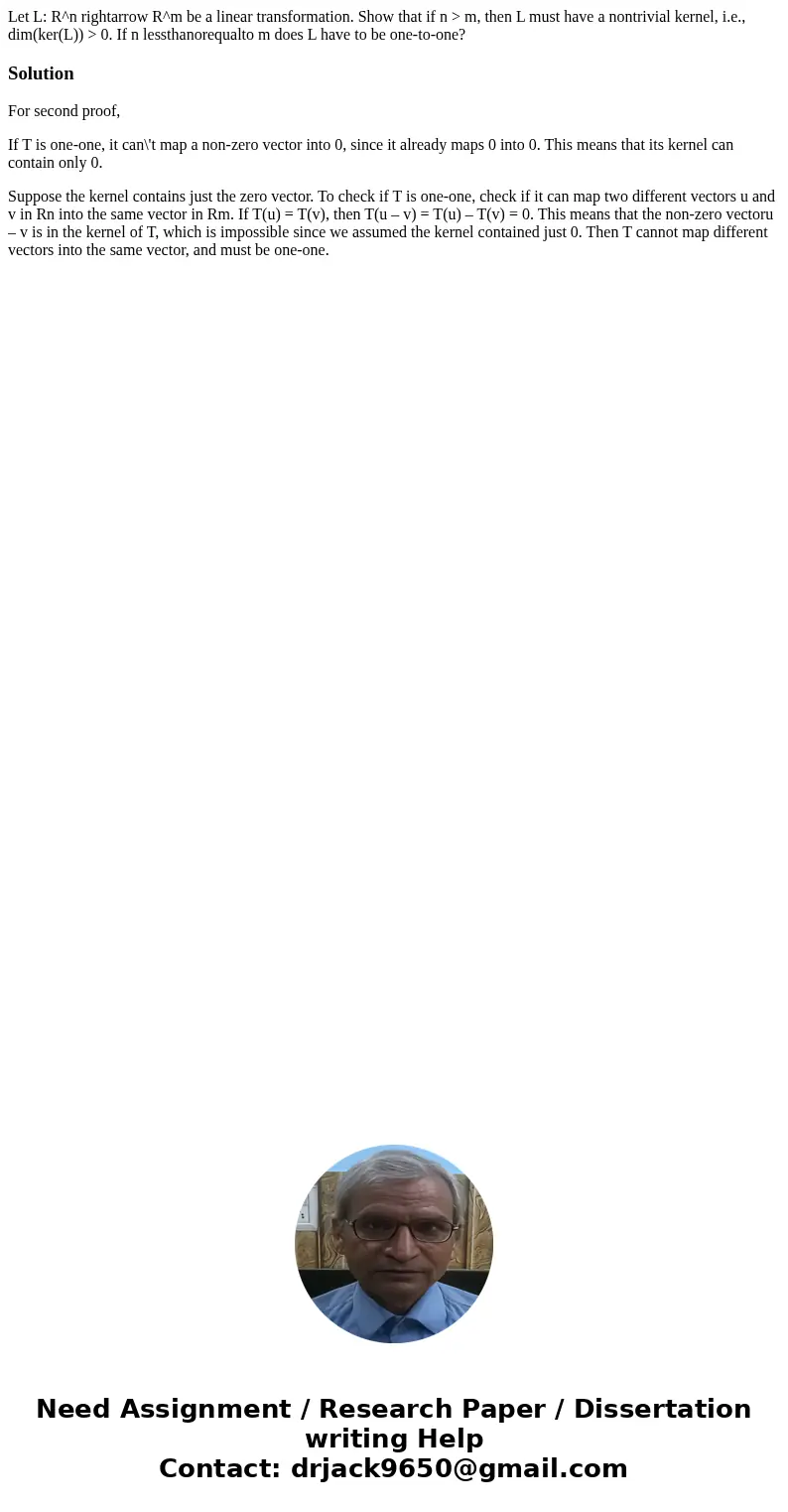Let L Rn rightarrow Rm be a linear transformation Show that
Let L: R^n rightarrow R^m be a linear transformation. Show that if n > m, then L must have a nontrivial kernel, i.e., dim(ker(L)) > 0. If n lessthanorequalto m does L have to be one-to-one?
Solution
For second proof,
If T is one-one, it can\'t map a non-zero vector into 0, since it already maps 0 into 0. This means that its kernel can contain only 0.
Suppose the kernel contains just the zero vector. To check if T is one-one, check if it can map two different vectors u and v in Rn into the same vector in Rm. If T(u) = T(v), then T(u – v) = T(u) – T(v) = 0. This means that the non-zero vectoru – v is in the kernel of T, which is impossible since we assumed the kernel contained just 0. Then T cannot map different vectors into the same vector, and must be one-one.

 Homework Sourse
Homework Sourse